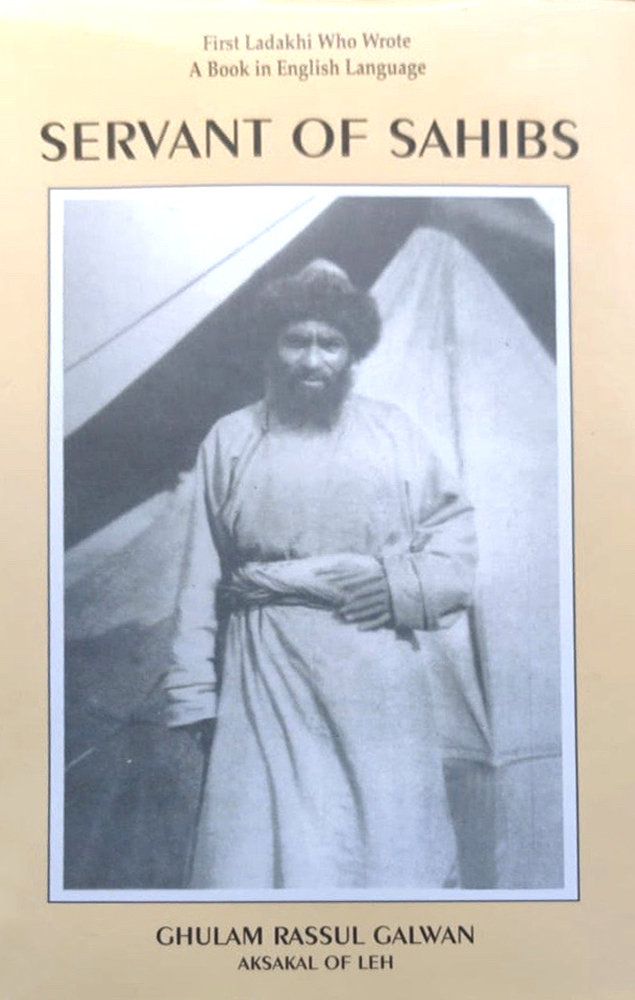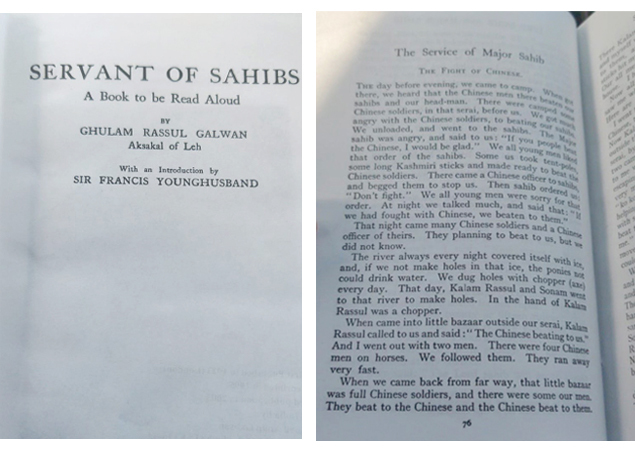Galwan Valley
This is a collection of articles archived for the excellence of their content. |
History
Rohan Dua, July 4, 2020: The Times of India

From: Rohan Dua, July 4, 2020: The Times of India

From: Rohan Dua, July 4, 2020: The Times of India
Source: Rasul Bailay, great-grandson of Ghulam Rasul Galwan in economictimes.com
Days after the India-China face-off in Galwan river valley, the family of Ladhakhi writer and explorer Ghulam Rasul Galwan — from whom the valley gets its name — recalled another brutal encounter on the same land, this one a century ago, that their ancestor had with Chinese soldiers during an expedition in the 1900s.
“It pains us that more than 100 years on, Chinese transgressions have continued. Galwan valley is named after my great-grandfather who bravely fought the Chinese and lived to tell the tale,” Manzoor, the author’s great-grandson, told TOI from his home in Leh’s Yourtung.
Galwan’s grandson, Amin, a 65-year-old retired government servant, recalled the Chinese attack mentioned in his grandfather’s autobiography ‘Servant of Sahibs: Asakal of Leh’. He said: “My grandfather had taken along sahibs (as British were called then) for an expedition near the valley in the early 1900s when there were several instances of Chinese soldiers beating them up. One day, there was news of another attack and armed with sticks my grandfather and a few others ran after four Chinese soldiers riding horses. When they were on their way back to camp, some Chinese men attacked them brutally. They managed to flee and hide in a house for some time but when they came out, the Chinese encircled them. It was only when my grandfather feigned death that they left.”
Galwan lay there until some British men came to his rescue several hours later. It's his tales of exploration and courage that are often cited in the region. Galwan’s journey from a porter to an ‘aksakal’ or assistant to the then British joint commissioner at Leh is recorded in gazetteers.
Amin said his grandfather was born in 1878 in Leh and worked as a guide for the British in Tibet, the mountains of central Asia — especially the Karakoram Range — when he was barely 12. It was a time when the British were anxious about Russian expansion with an eye on Tibet. Galwan guided troops through the hostile territory and gathered intelligence about Russian plans that could compromise British interests in India.
Renowned Ladakhi historian Abdul Ghani Sheikh said that it was during an expedition with Lord Dunmore that bad weather led their caravan astray. Galwan then went in search of a route they could use and reached a river. He found one and the explorers escape certain death. Grateful, Dunmore named the valley and the river after Galwan. “He was the first man from Ladakh to write a book in English.”
“I have never heard of an instance of naming of major geographical feature after a native explorer. British names have been given but never heard of one being named after a local,” says Harish Kapadia, mountaineer, author and long-time editor of the Himalayan Journal.
Many independent ecologists and historians in Ladakh share old records of how Galwan undertook treks with iconic global travellers of that era including 7th Earl of Dunmore, Charles Murray, English geologist Godwin Austen, Sir Francis Younghusband and Italian zoologist Fillipo de Fillipo.
Tahir, another one of his great-grandsons, dreams of opening a memorial in Galwan valley as a tribute to his great-grandfather. But he has concerns. “A lot of Chinese goods, such as electronics and apparel, reach Ladakh via Nepal. It’s time that we boycott such products and give a strong push to Indian brands,” the alumnus of Delhi University said, adding, “The Galwan valley will always remain ours.”
LIFE AND TIMES OF GHULAM RASUL GALWAN
Born in 1878, Galwan either led or was part of numerous expeditions into Tibet, Yarkand (now in the Uygur Autonomous Region of Xinjiang, China), the Karakoram range, the Pamirs and other Central Asian regions — mostly through inhospitable geographies with altitudes ranging from 5,000 m to 7,000 m above the sea level and where temperature plunged to -30 degree Celsius in the winter.
Galwan was forced to go on risky, long-distance expeditions at a young age, to supplement the income of his single mother, a winnower. But the path he chose due to compulsion, became a passion and he never looked back. Starting out as a porter and pony man, he rose through the ranks to eventually become the 'aksakal' or the chief assistant of the British joint commissioner at Leh.
He died at 47, in 1925 and appears to have been travelling nearly all of his relatively short life, with the legendary names of those times.